Trees can add so much to your yard – privacy, shade, and beauty. What trees should you plant? This is a short list of some favorite trees that can easily fit into your landscape design. These trees are easy to care for, and they’re beautiful.
Jump to:
White Oak (Quercus alba)
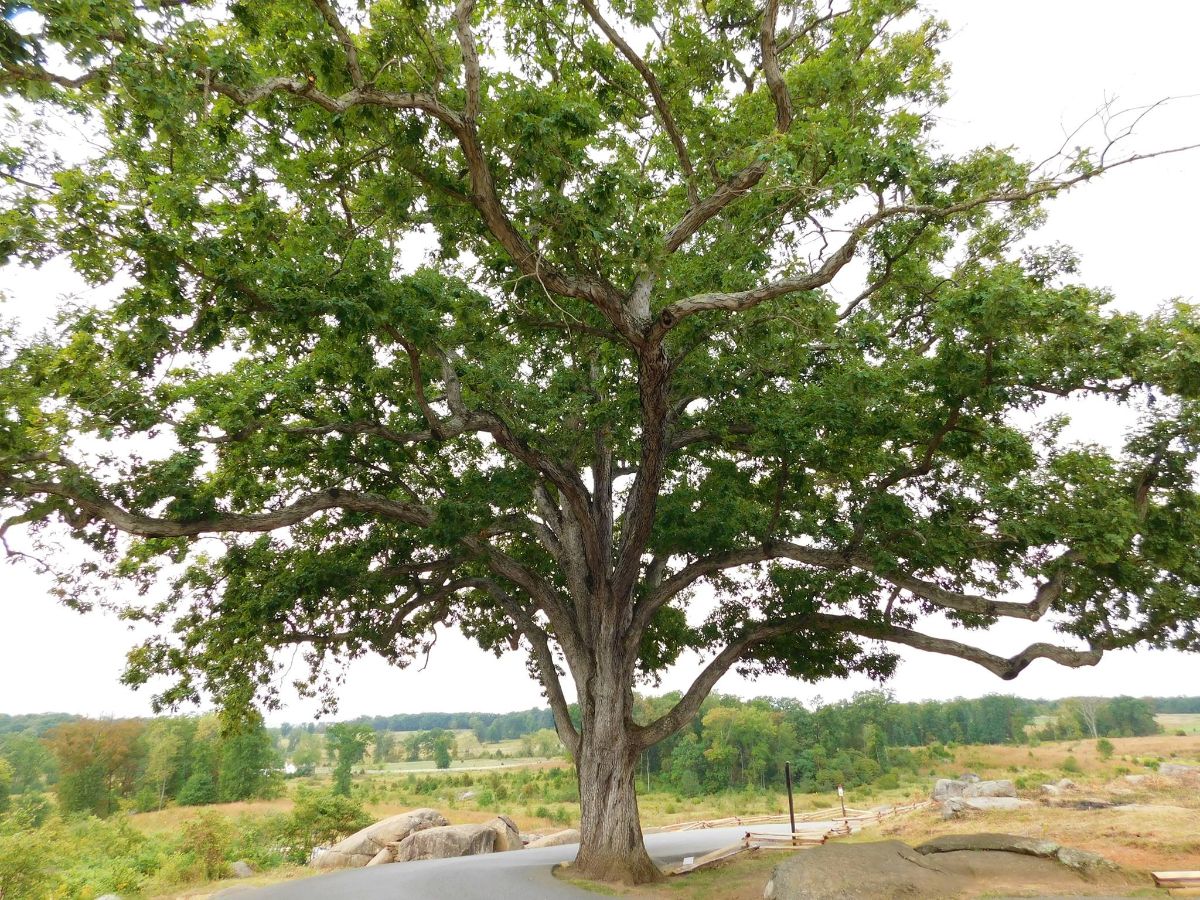
This outstanding tree is a winner in so many ways. White oaks have a nice tidy form, a straight trunk, and handsome lobed leaves. Older specimens will develop picturesque twisting limbs that add character.
Fall color from white oaks is subtle, not all flashy like maple trees. Not all white oaks have fall color; some are an uninteresting brown, while others turn a beautiful rose-red. The light gray bark in small squares is handsome in winter.
The white oak’s main value is how solid it is. Craftsmen have used white oak for centuries to make furniture and houses. The trees are slow-growing, generally adding a foot of height per year. This slow growth is what makes the tree so strong.
Young white oaks will have a deep taproot, but as the tree grows, that’s replaced with a fibrous root system with well-developed lateral roots. They stay within four feet of the surface of the ground, and they hold tight to the soil.
You likely won’t live long enough to see the oak reach its full height – but white oaks can live for centuries. So you’re not just planting for today but for generations.
White oak trees are strong. Anytime you have a windstorm, maple and sycamore trees will throw big limbs at you, but a white oak tree will not do that. They endure.
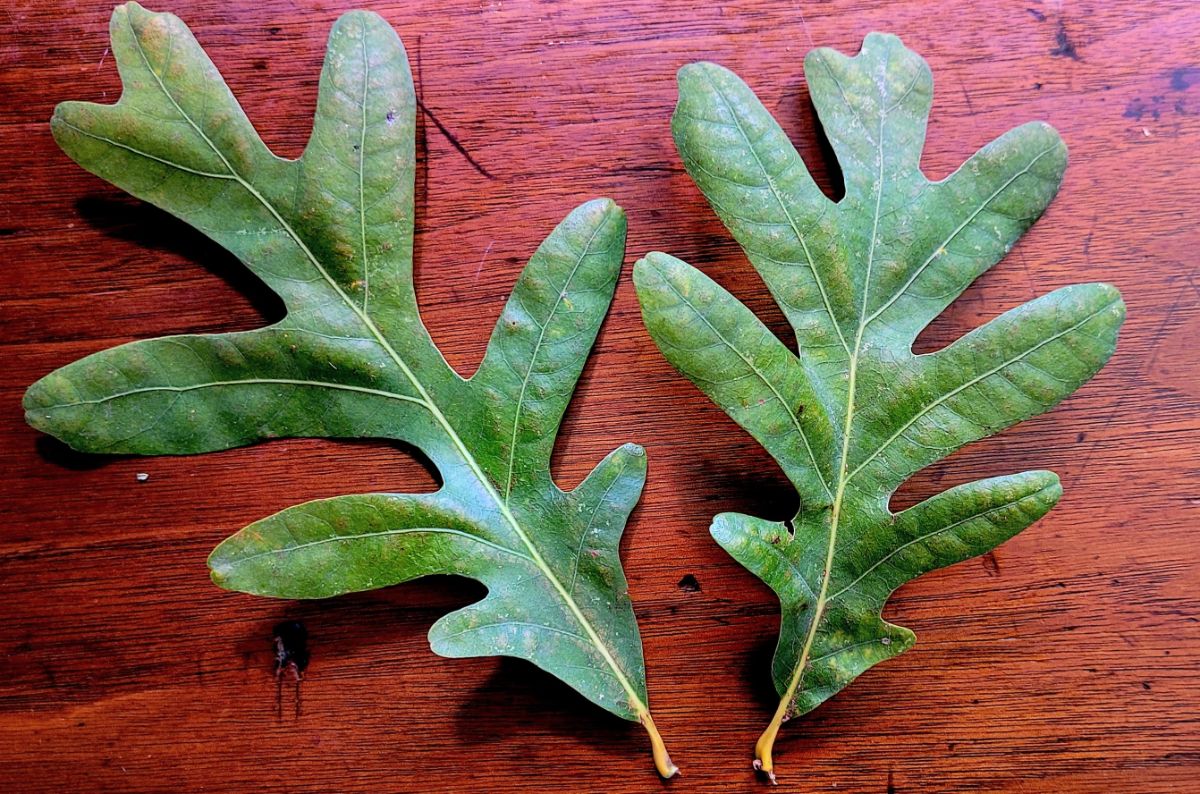
I planted a white oak right in front of my house. It’s a durable, beautiful tree that will last for centuries if treated properly.
The acorns can be messy unless you have a bunch of squirrels hard at work cleaning them up. Acorns are great for wildlife, enjoyed by over 180 kinds of birds and mammals, including deer, squirrels, turkeys, opossums, and blue jays.
In Missouri, you can gather the acorns up and sell them to a nursery that works with the Missouri Department of Conservation, where they’re used to grow the nursery bundles that the department sells in spring.
Ginkgo (Ginkgo biloba)
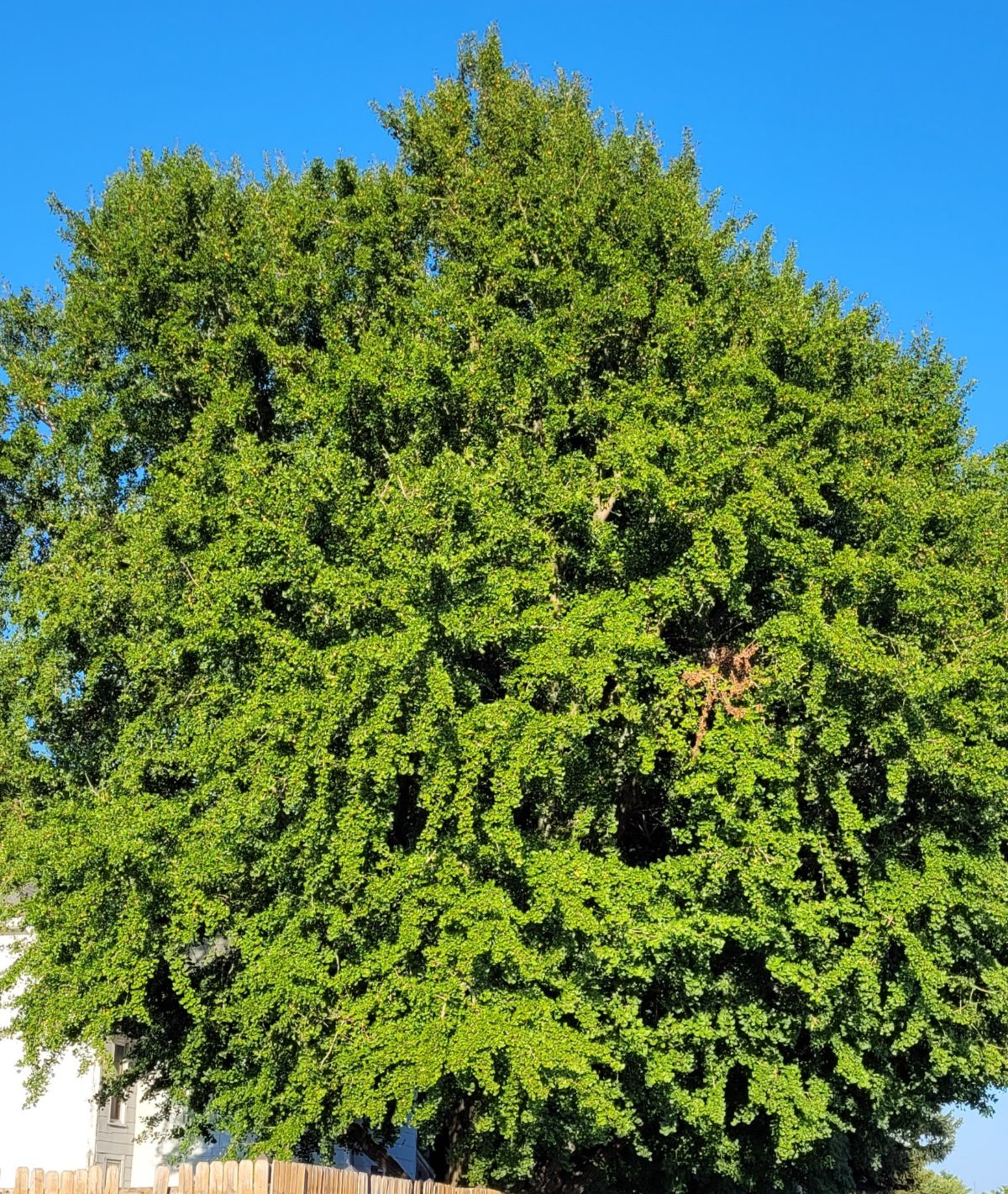
I have been fascinated by ginkgo trees for ages. The leaves look like small fans. I used to pick up ginkgo leaves and put in them in my notebooks and press them because I just liked just like the form of them.
The leaves were even better in fall because they’d turn this brilliant golden color. Gingkoes make an amazing fall tree.
For the rest of the year, the ginkgo tree looks stately. Again, this is a slow-growing tree that can grow for centuries in the right conditions. Some ginkgo trees are said to be over 2,500 years old.
And, if you want to talk about old, the ginkgo species actually date back to the time of the dinosaurs -- they’re considered a living fossil.
The ginkgo, as we know it, is the last living species in its order. Fossils of ginkgoes from the Middle Jurassic epoch have been found -- from approximately 170 million years ago!
The structure of the ginkgo tree is very architectural. You have a nice trunk going straight up, and then the limbs come out at angles, like somebody drew them with a ruler.
Gingkoes are a large tree, growing from 60 to 120 feet tall, though some trees in its native China are even taller.
These trees are just about disease-free, have very little problem with insects, and are even deer-resistant.
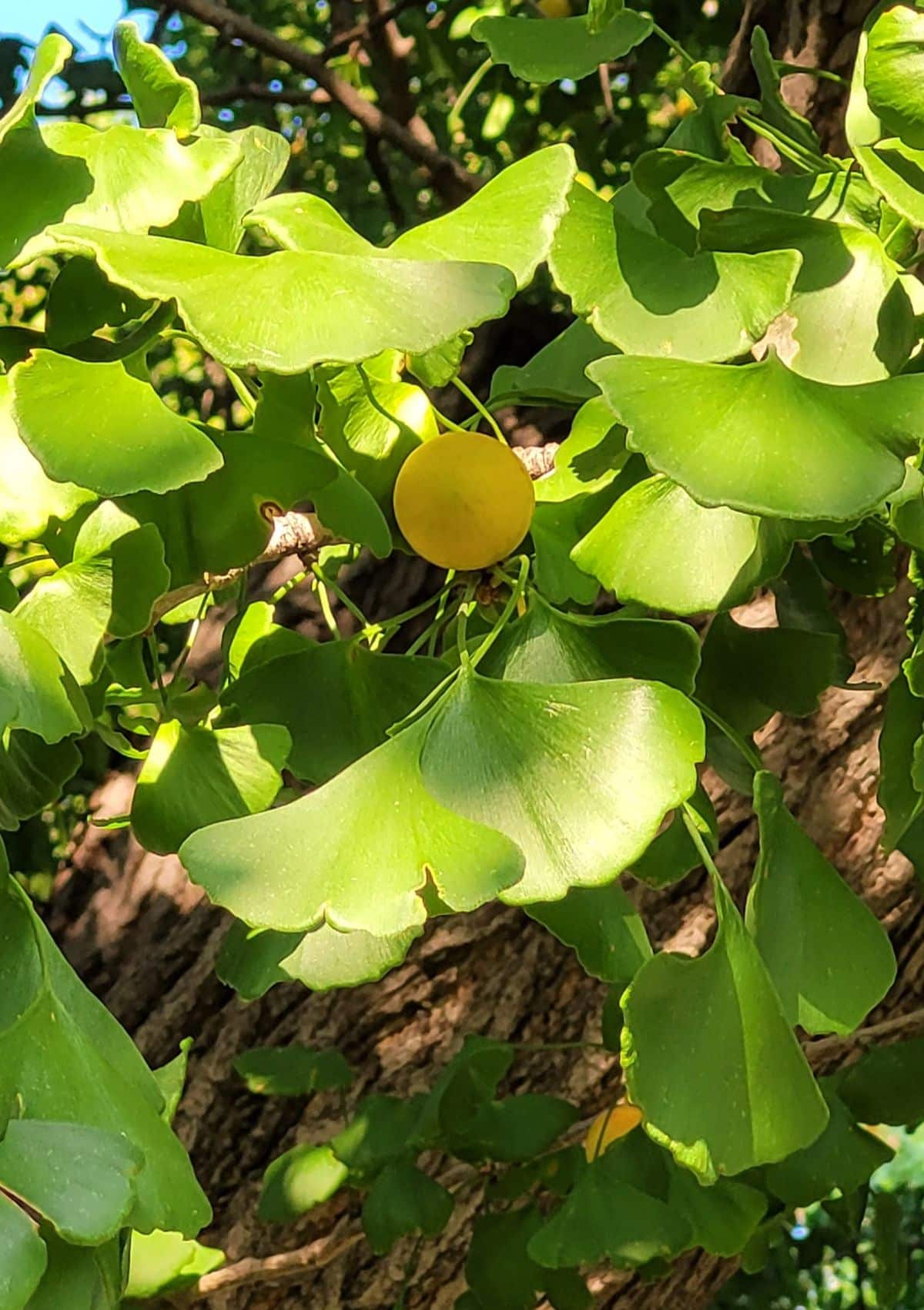
Ginkgoes come in male and female trees, and they need both trees to get fruits.
Generally, only ginkgo males are sold at nurseries. A lot of people don’t want fruits because they have a strong odor. However, the Asian community knows that the nuts inside the fruit are delicious when roasted.
My horticulture professor, Dr. Fairchild, said that she’d go home sometimes on the bus, and there’d be folks sitting there with bags of ginkgo nuts on their laps that they’d gathered.
If you gather your own, wear gloves because the pulp can cause the skin to flake off your hands. The roasted seeds can be addictive! But don’t eat too many at once, as many can be mildly poisonous.
If there is a sudden heavy freeze, you’ll suddenly have a bunch of green leaves just pattering to the ground of the ginkgo’s branches. It’s wild to see.
This is a nice story: There’s an old ginkgo tree growing near President Truman’s house in Independence, Missouri. When he’d go on his daily walks, he’d give the tree a pat and say, “You’re doing a good job.”
Isn’t that just sweet?
Golden Rain Tree (Koelreuteria paniculata)
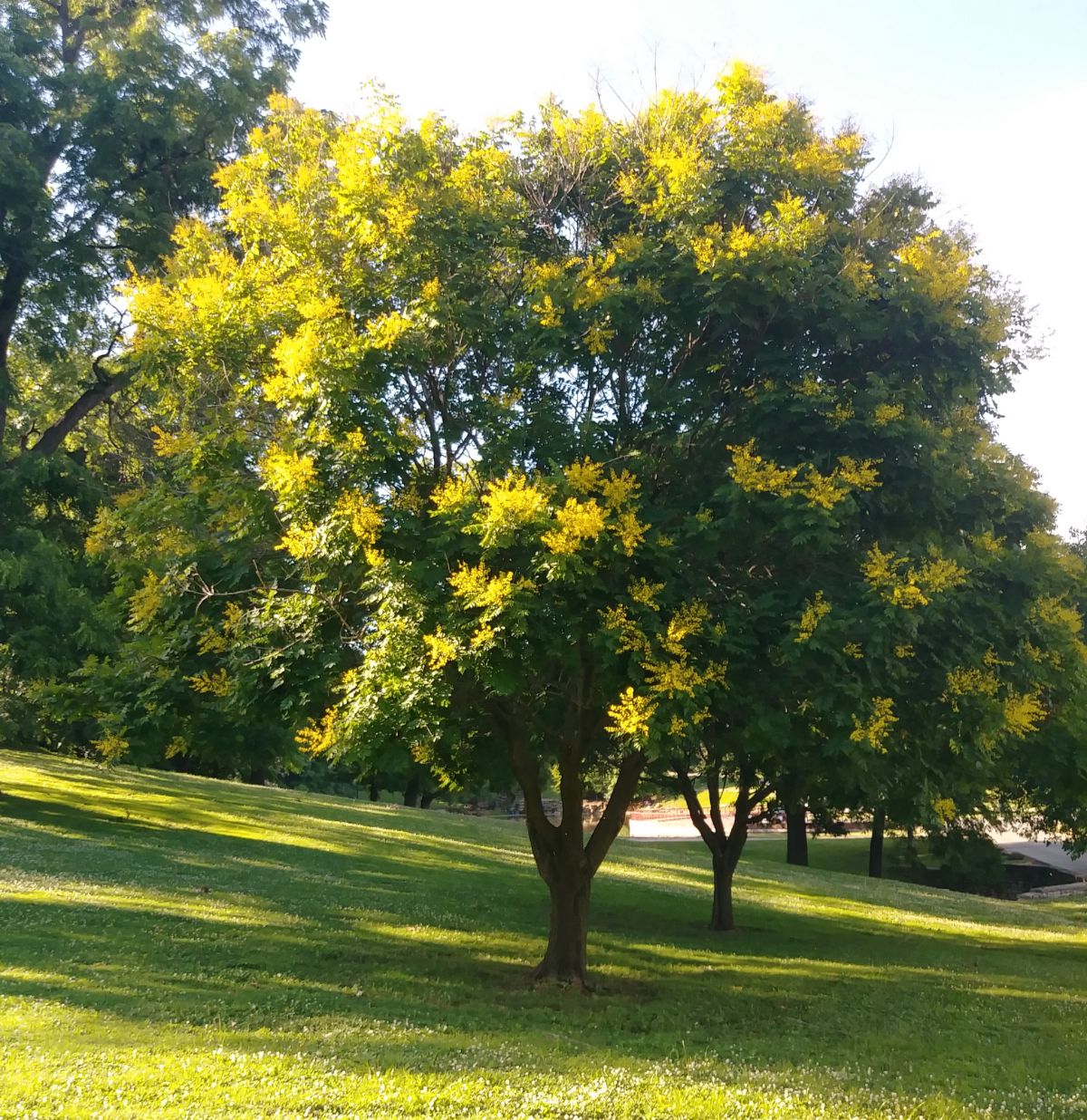
I didn’t know this tree existed until I took introduction to woody plants, woody, landscape plants, and shrubs in college. Dr. Fairchild would walk us all over campus to look at trees that we needed to learn. She was a very fast walker. She’d be three miles ahead of us, zooming along, and all of us young, fit college students would be behind her all out of breath.
That class was my introduction to Golden Rain Tree (as well as a lot of other great trees).
First, the leaves are long leaves, like you’d see on a walnut or a sumac tree. The leaflets are jagged things. Very, very handsome.
Then you get these bright yellow flowers in early summer when there’s not much else going on in the trees. They’ve all finished their spring blossoms, and now they’re completely over it. But then June comes along the golden rain tree pops out all these brilliant yellow blossoms in panicles.
When the blooms are finished, they’ll follow that up with little lanterns with berries inside, like tomatillos. Sometimes the lanterns turn pink.
As the season changes, the lanterns will brown up but still look cool.
A golden rain tree is good for small yards where they’ll fit and won’t take up too much space. they get about 20 to 35 feet tall and about 15-20 feet wide.
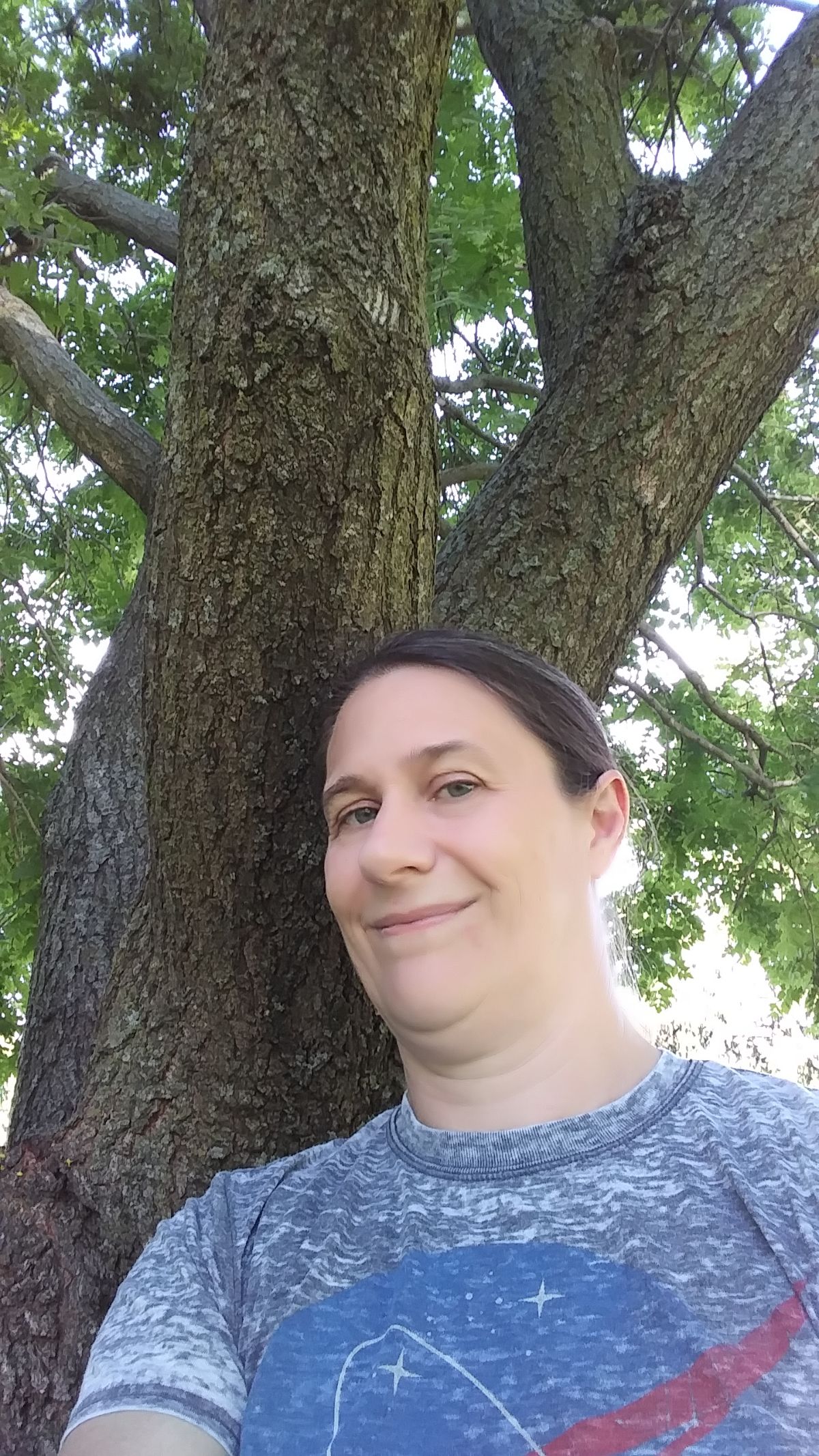
I planted 12 balled and burlapped trees in Krug Park in Saint Joseph about 20 years ago. One of them is dying back now, but the rest are still healthy and about 25 feet taller. They’re very handsome trees.
Balled and burlapped trees have huge root balls wrapped up in burlap and a wire cage. I thought I was going to bust my back trying to move those things. I had a work crew to do the lifting, and it was still tough. But the result was very much worth it.
Paperbark Maple (Acer grisium)
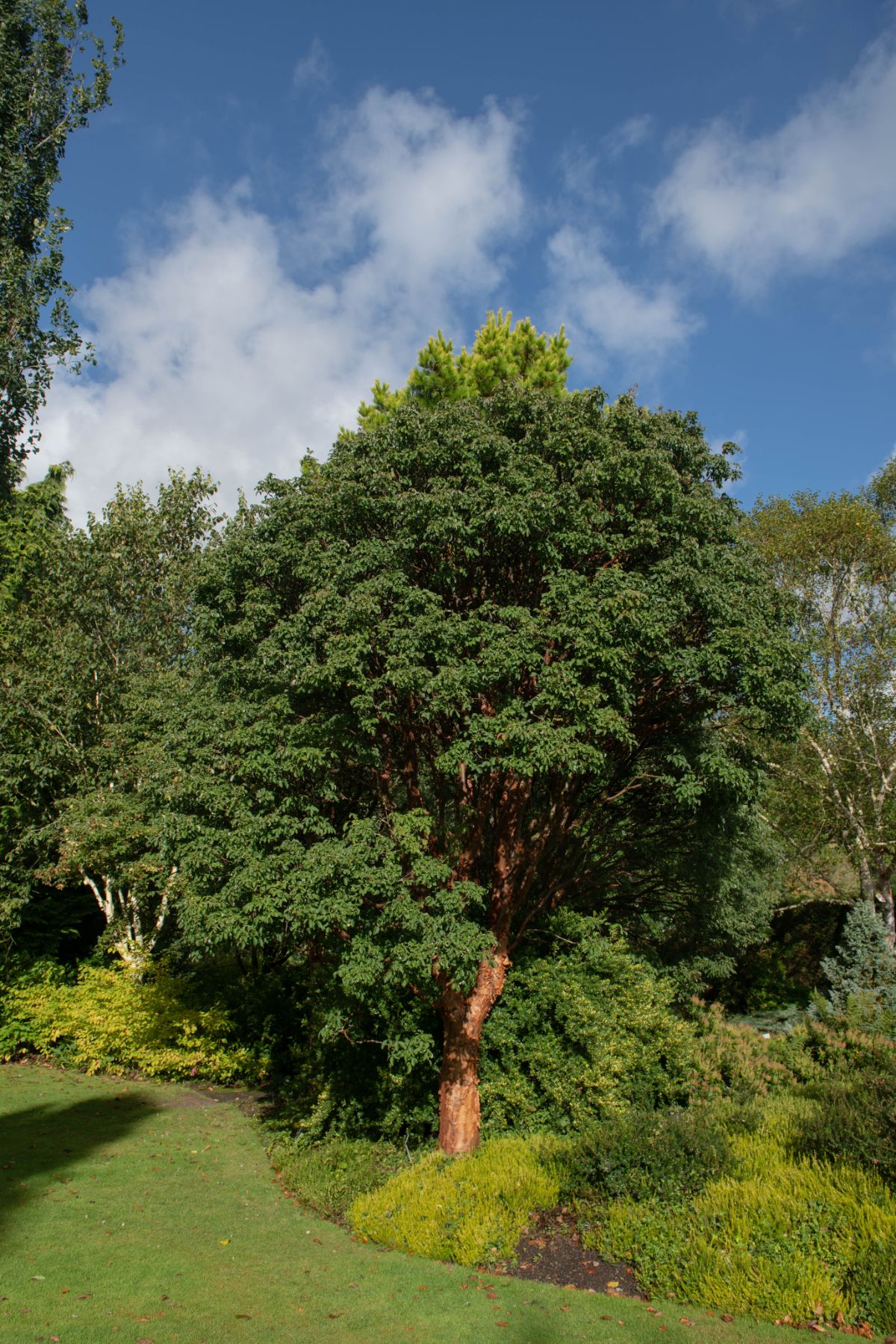
I didn’t run across this tree until I was in graduate school at Hamline University in Saint Paul.
Now, Minnesota seems to have a different relationship with plants because their growing season is so short.
Up there, they have flowers all over their yards. I’d walk around the Midtown neighborhood, and there were fruit trees growing and raspberry vines along the fences, and dangling raspberries in my path.
Hamline University, true to the place, is beautifully landscaped. Around the campus would be these little spaces open, like rooms, where there’d be a circle of lawn surrounded by shrubs and trees and perennials, and benches to sit at there. were these inviting spaces where you could sit down and enjoy the nature around you.
They also had these small trees that I had not seen before, with cinnamon bark with a luster to it and gorgeous peeling bark like you’d see on a birch tree.
It was a paperbark maple.
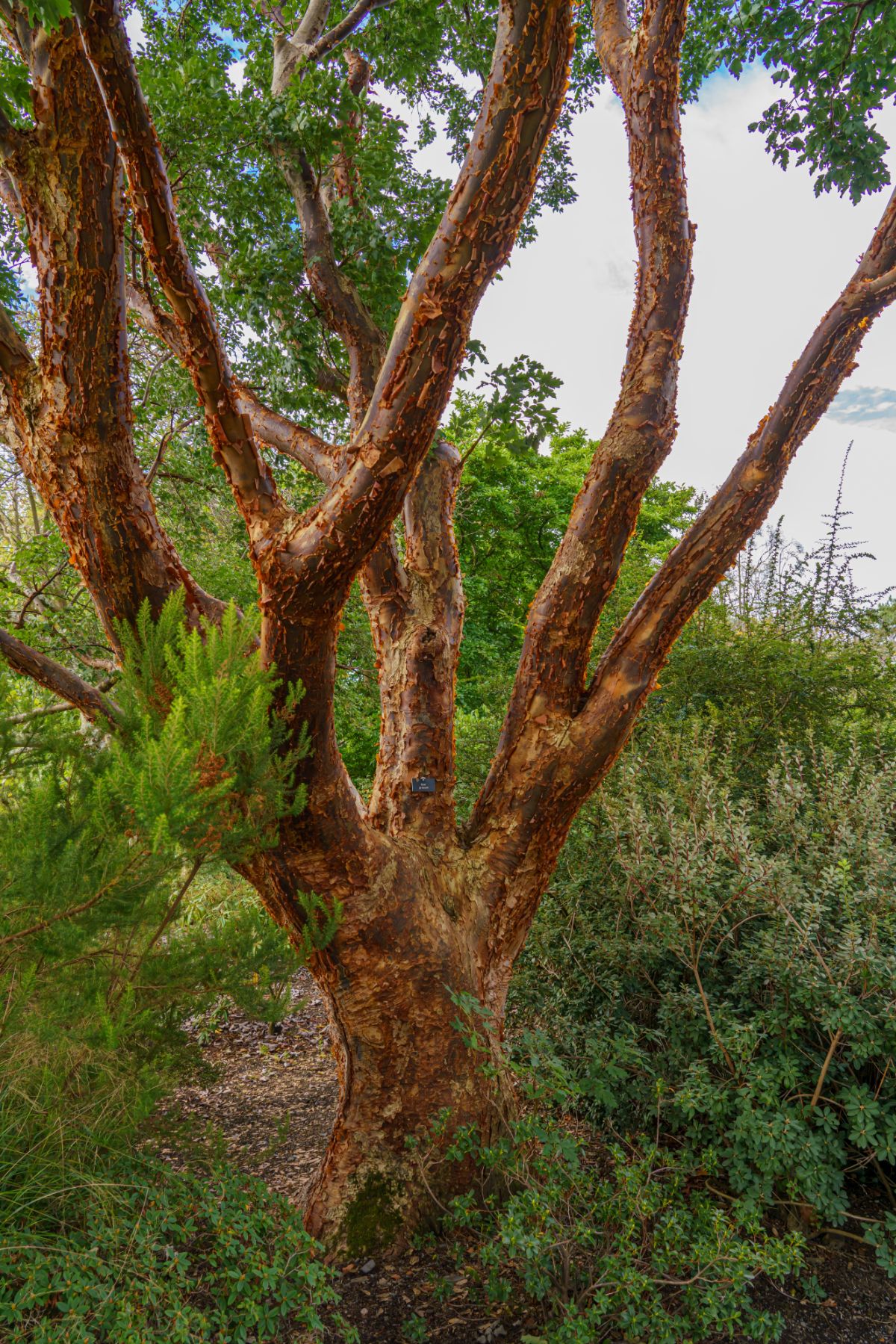
Of course, the bark is beautiful. The leaves will turn colors in the fall, as maples do. And then, in winter, you’ve got this beautiful reddish-brown bark against the snow.
So you’ve got four season beauty there, not just in spring, summer, and fall, but in winter too.
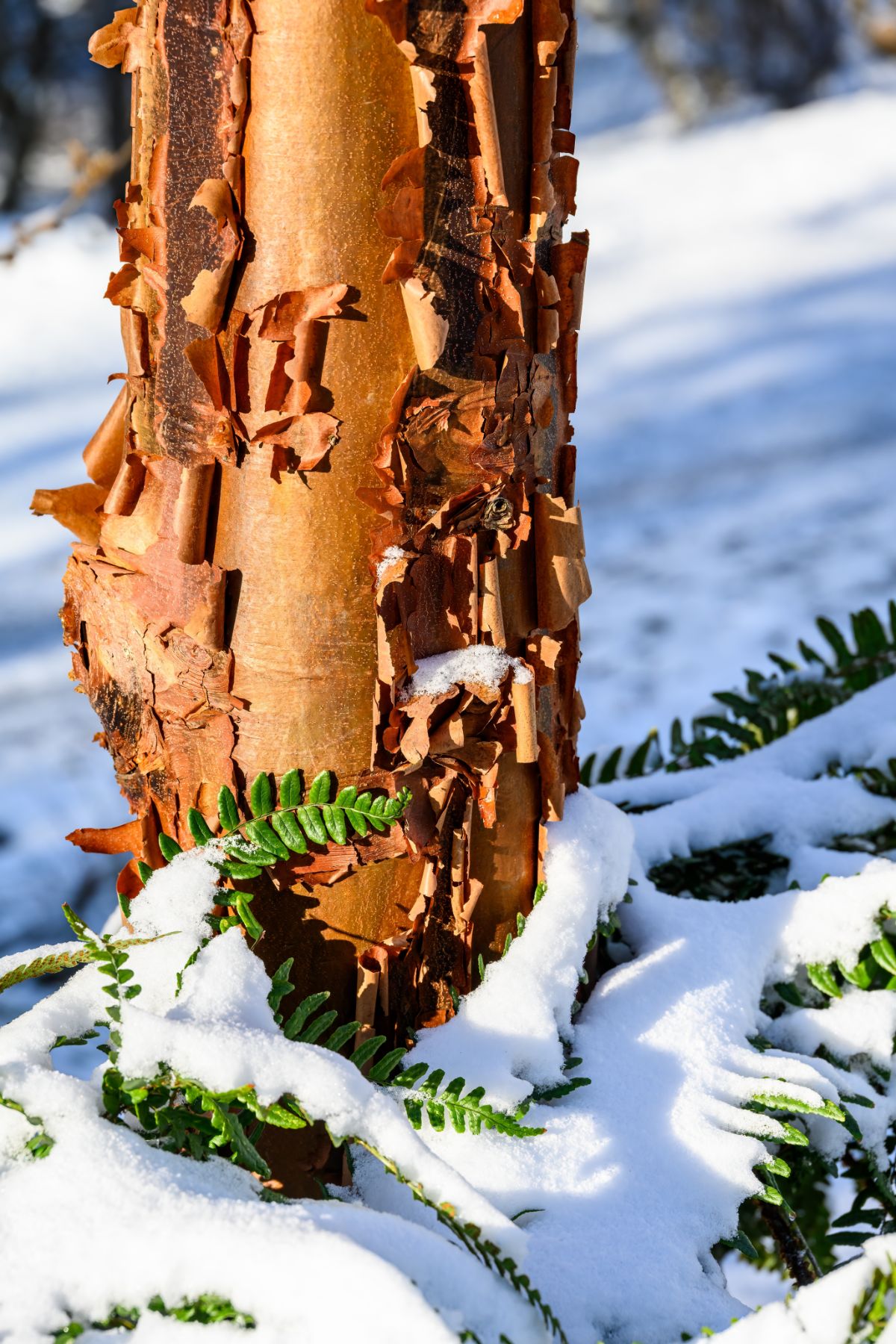
Again, if you have a small space, this would also be a good tree for that small space.
10 out of 10, would sit under this one again.
River Birch (Betula nigra)
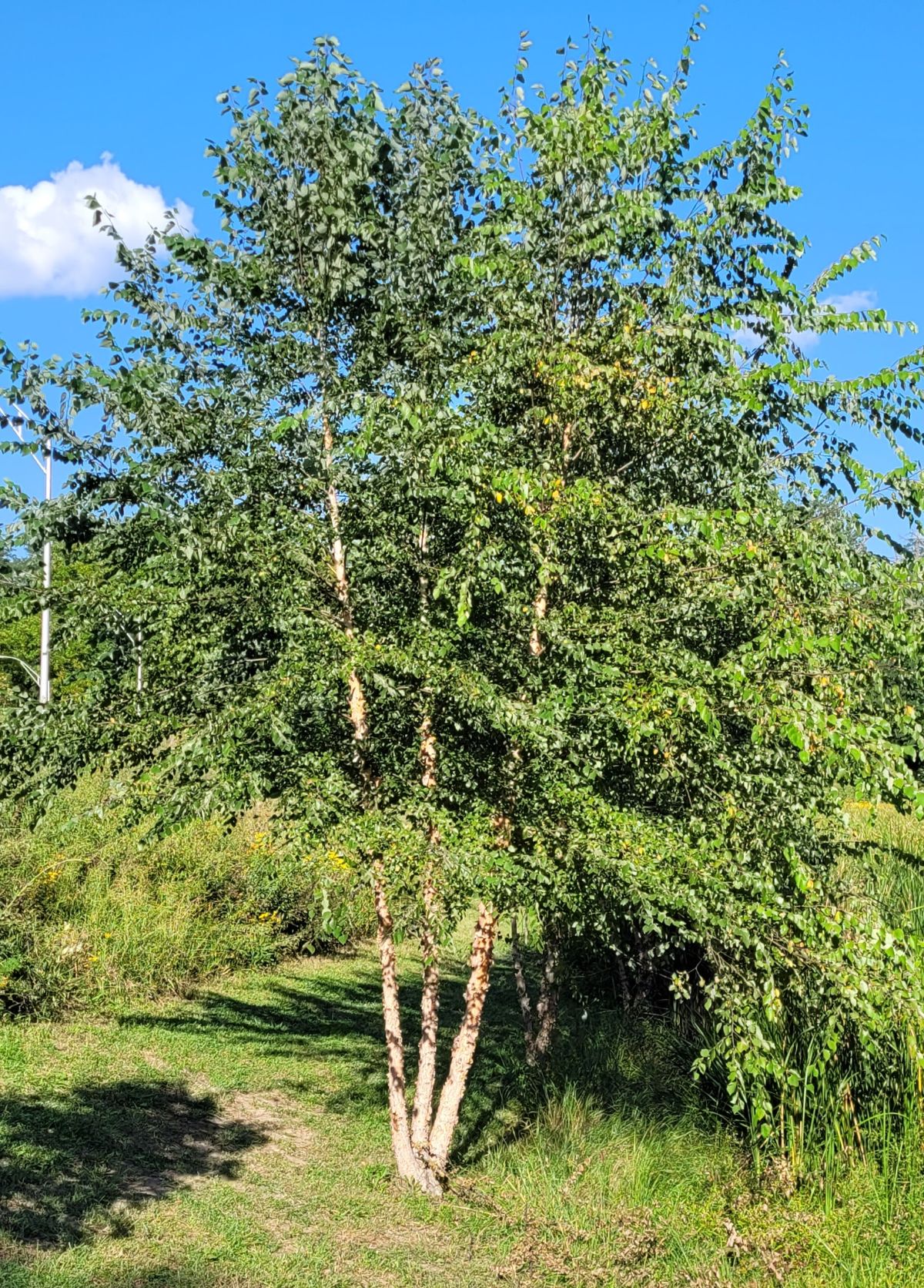
Here’s another tree with peeling bark. The river birch is a popular tree and with good reason. Bark, form, leaves, hardiness – from whatever angle you view the tree, it’s going to look good.
The river birch is sometimes a single-trunked tree, but it usually has two or three trunks. The willowy, weeping branches curve delicately with elegant triangular leaves that shimmer in the breeze.
River birch grows to be 30 to 50 feet tall, though in a few cases, it could get up to 90 feet tall.
The satiny bark on the tree, like the paperbark maple, is attractive with papery white and tan bark against cinnamon and makes an attractive tree all winter.
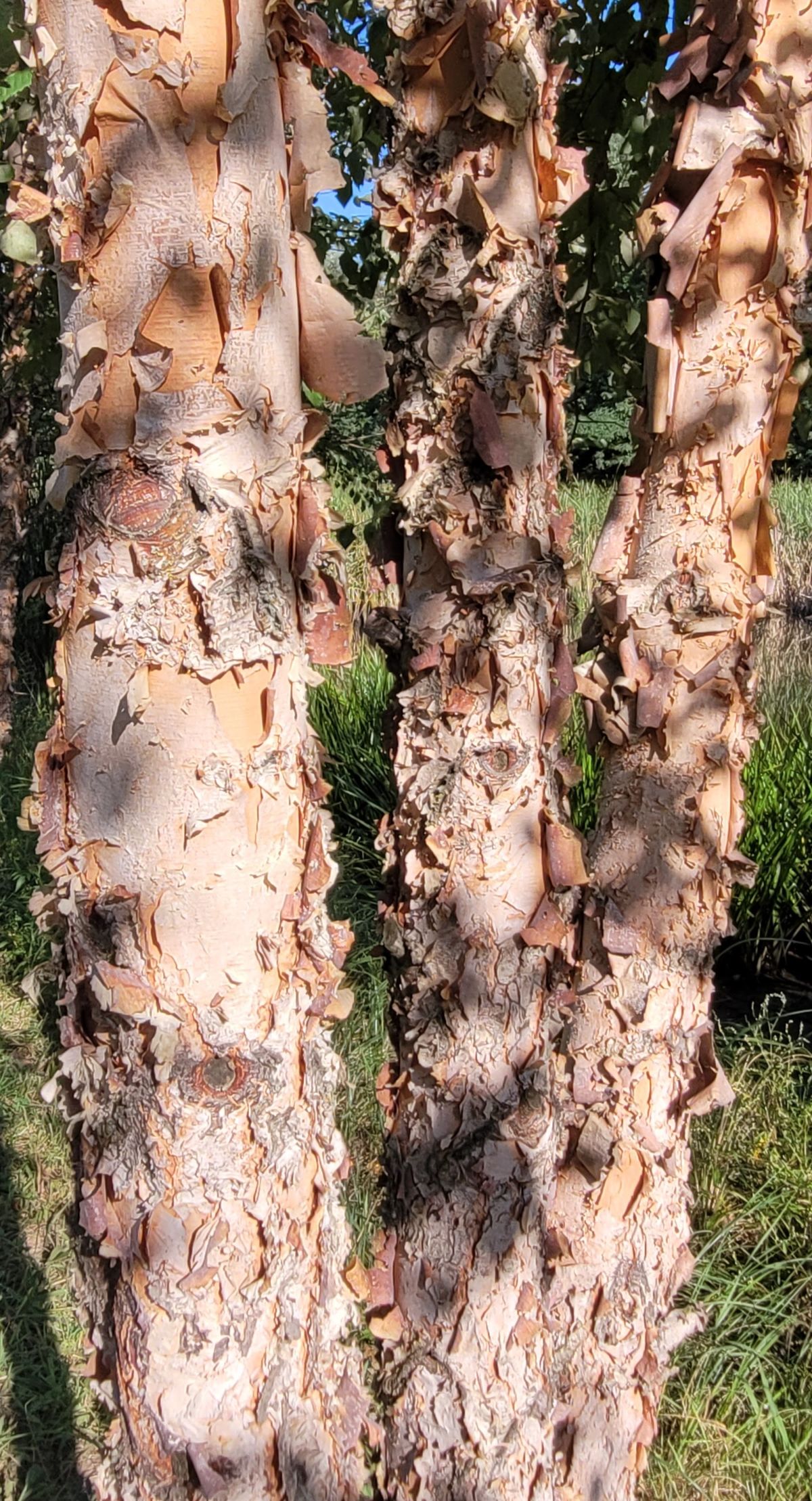
River birches might possibly be a little bit overused these days, but its adaptability and beauty make it a good choice. It’s very trouble-free.
It can be afflicted by tent caterpillars in summer – but if you break apart the webbed tents and then spray them with insecticidal soap or neem oil, that should kill off the caterpillars.
During periods of drought, the tree can also develop chlorosis – when the leaves turn yellowish due to low iron intake – but this can often be fixed by watering the tree deeply and adding sulfur and chelated iron to the soil.
Bald Cypress (Taxodium distichum)
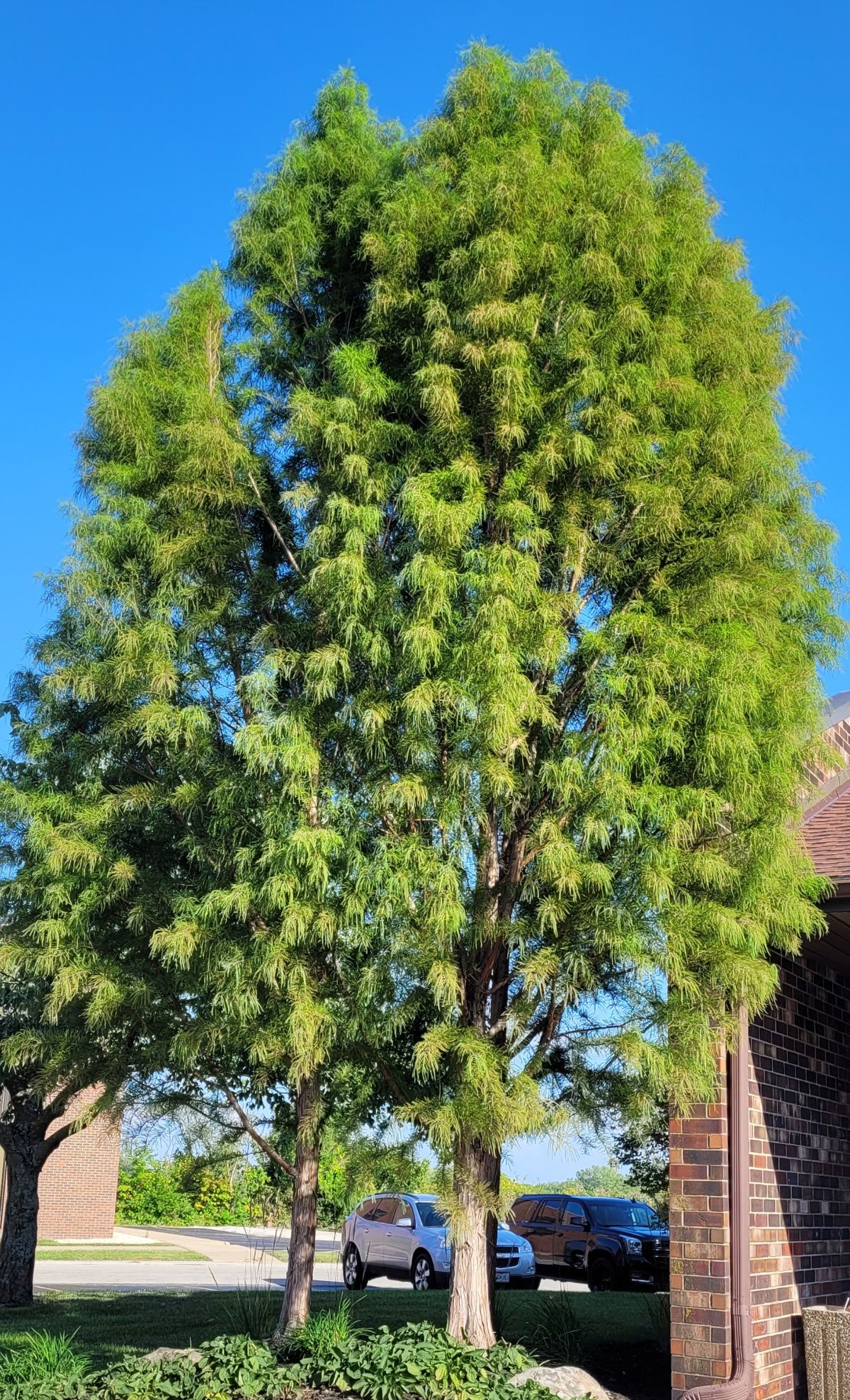
Bald cypress trees are deciduous conifers. In autumn, its leaves turn a copper or yellowish color before they fall, and they’re light and ferny, so they’re easy to clean up.
A bald cypress usually grows about 50 to 75 feet tall, but old specimens can grow up to a hundred feet tall and look absolutely majestic.
The bark is a reddish-cinnamon color and peels off in long strips, the way a cedar tree does. It looks great against the snow.
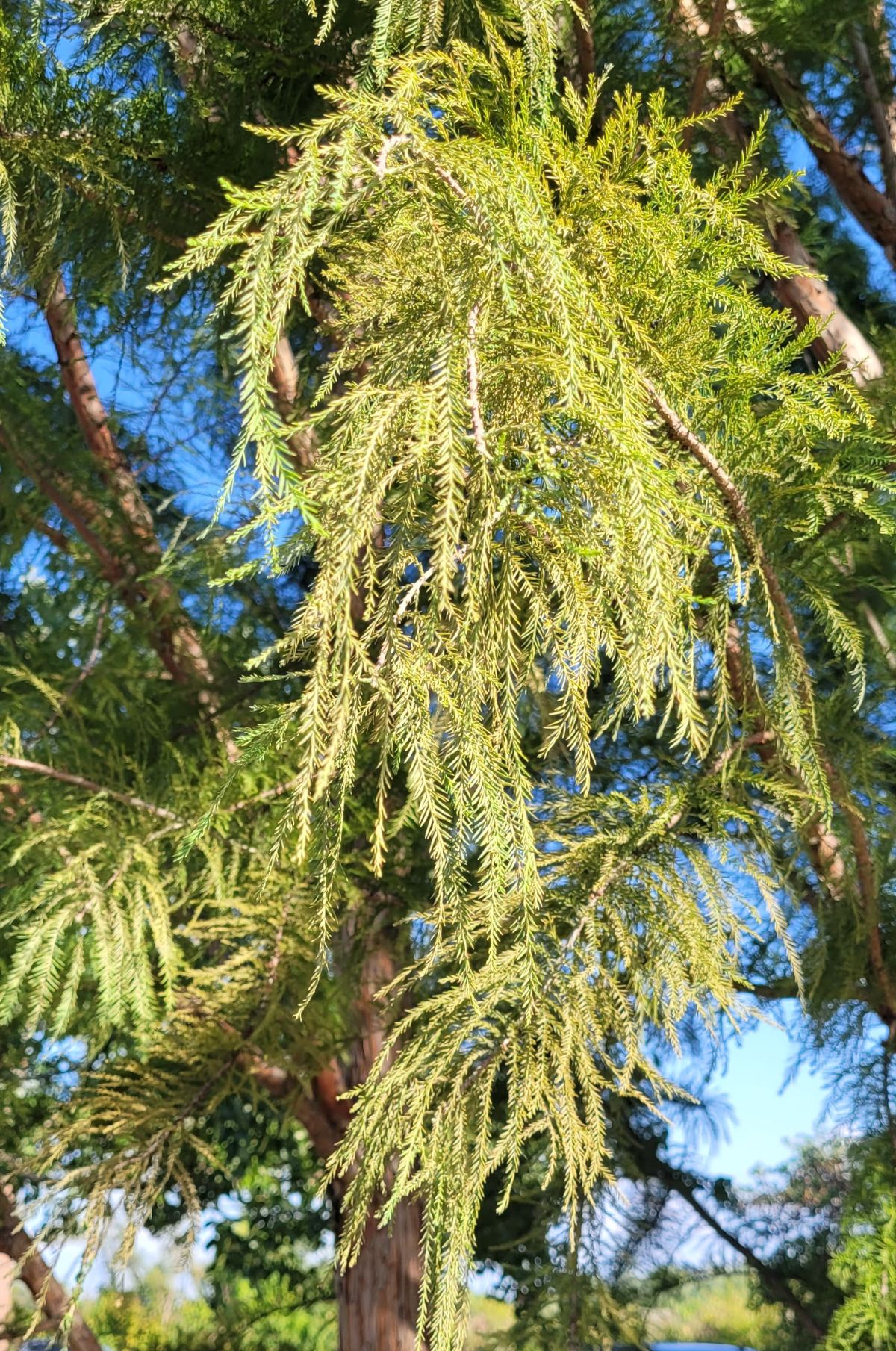
The bald cypress is a low-maintenance tree that doesn’t have much trouble with insect pests, though some might have issues with spider mites.
This tree adapts to a wide range of environments. You can plant this tree on good ground and even in boggy ground, and it will look good in either place. (In boggy areas, it forms those famous “knees” that allow its roots to stick out of the water and breathe).
Burr Oak (Quercus macrocarpa)
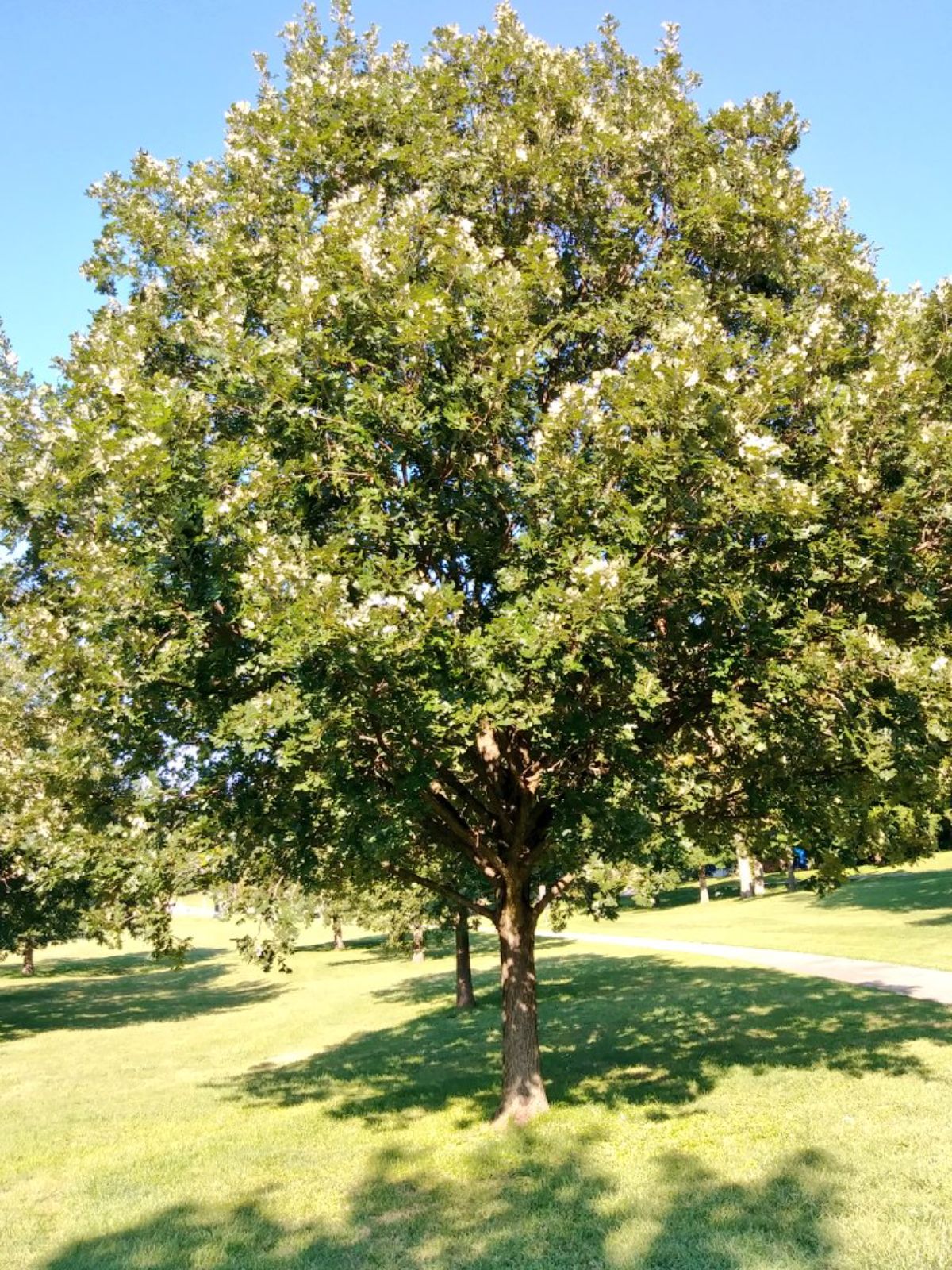
Near one of my old workplaces was near a neighborhood with these gigantic old burr oak trees. They were 75 feet tall and 50 feet wide, towering over everything and spreading their old arms out like ancient citizens who cared for us.
One of the folks who lived there said that when the neighborhood was built, the developers were adamant about keeping the old trees and integrating the houses into the area so the trees wouldn’t be disturbed.
A forester from the Missouri Department of Conservation looked at them and said the oaks were at least 200 to 250 years old. Burr oaks can become ancient if we let them.
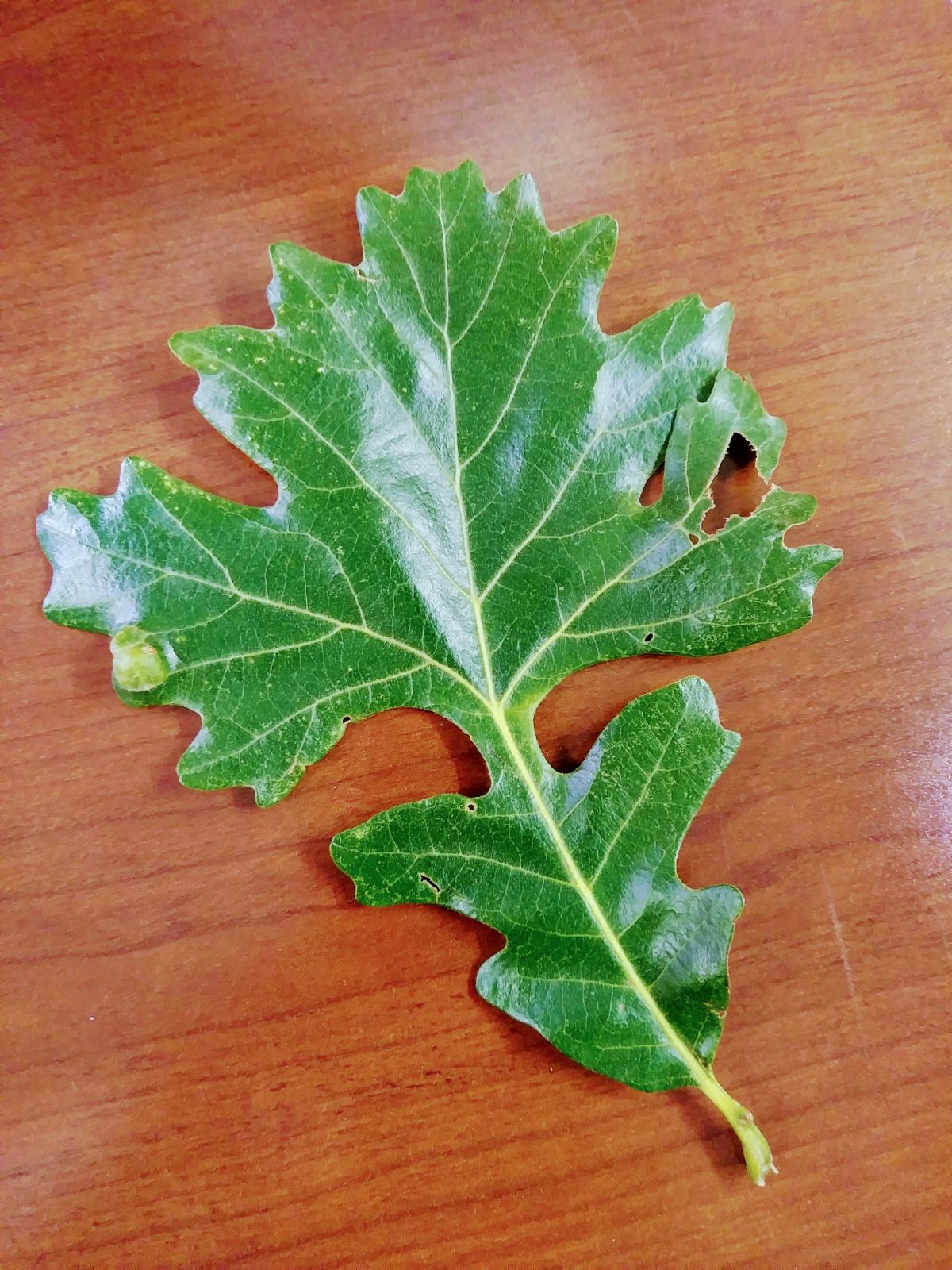
I don’t know who the developers of that subdivision were, but I wish I could shake their hands. They chose to preserve these noble trees that have seen more history and life than I’ll ever know. If only all developers were like this!
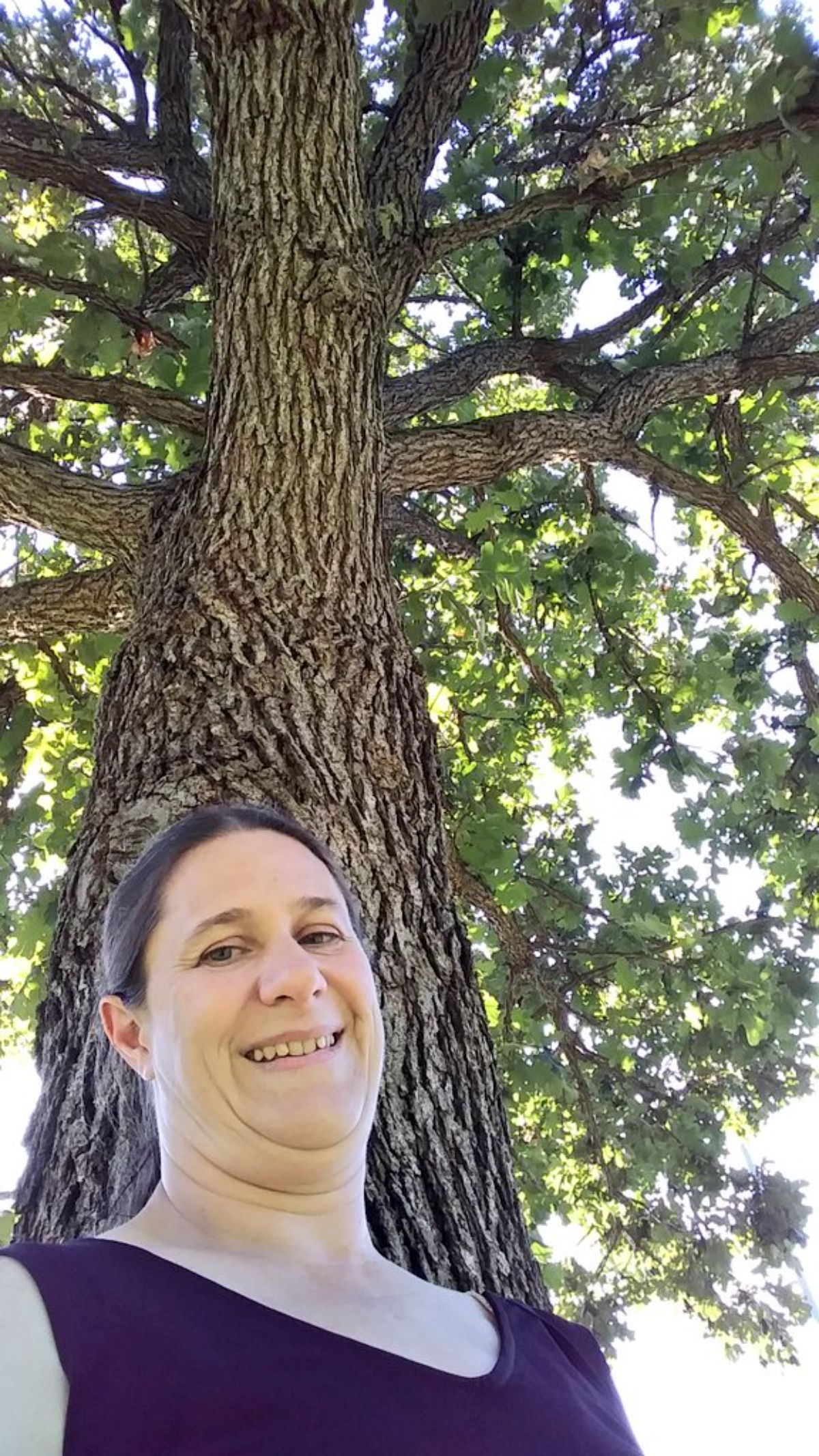
When I worked at the Parks Department, we transplanted a bunch of burr oak trees one year (but I wish we’d been able to transplant more). Deano ran the tree spade, and I found the places to plant them.
Some of these burr oak trees were a bit of a challenge, even for the four-foot tree spade. Sometimes when the tree spade brought the burr oak out of the ground, there’d be about a foot of root sticking out of the bottom, and Deano would raise his eyebrows. Those oak trees are serious about staying rooted!
I am very pleased with how all those trees look now. I wish I could see how they look 100 years from now.
Apple Trees (Malus spp.)
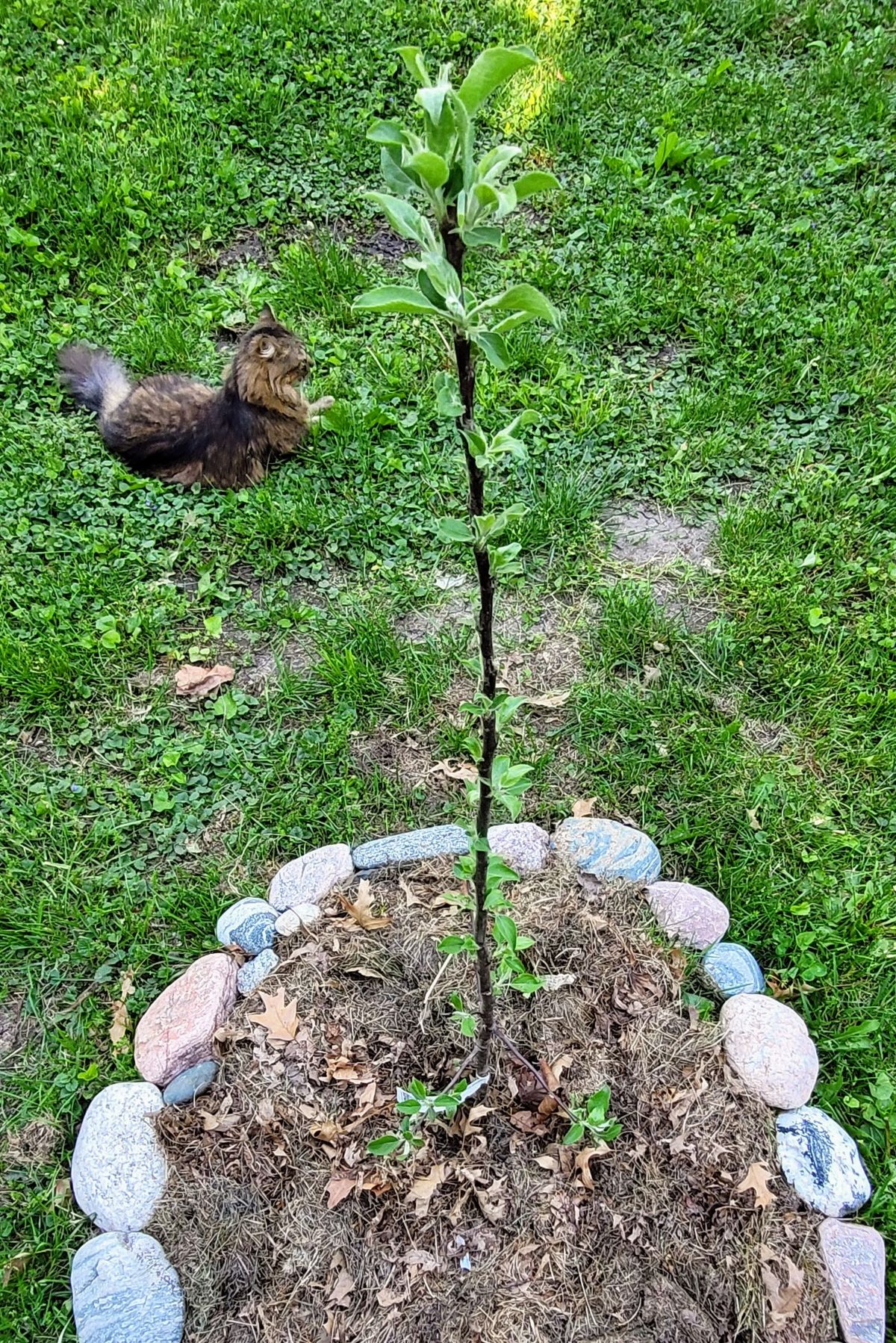
Yes, apple trees. This article is called “Trees I Like” and I like apple trees. Sure, they get diseases left and right, but what do I care? They give me apples!
Ever since I was a kid, I’ve wanted to have a whole orchard in my backyard. There’s no way I can eat all these apples, but so what? I just want to have all these old varieties, like Gravenstein and Cortland and Northern Spy and Spitzenbergs. I want to walk through them on a fall afternoon and eat random apples think about stuff.
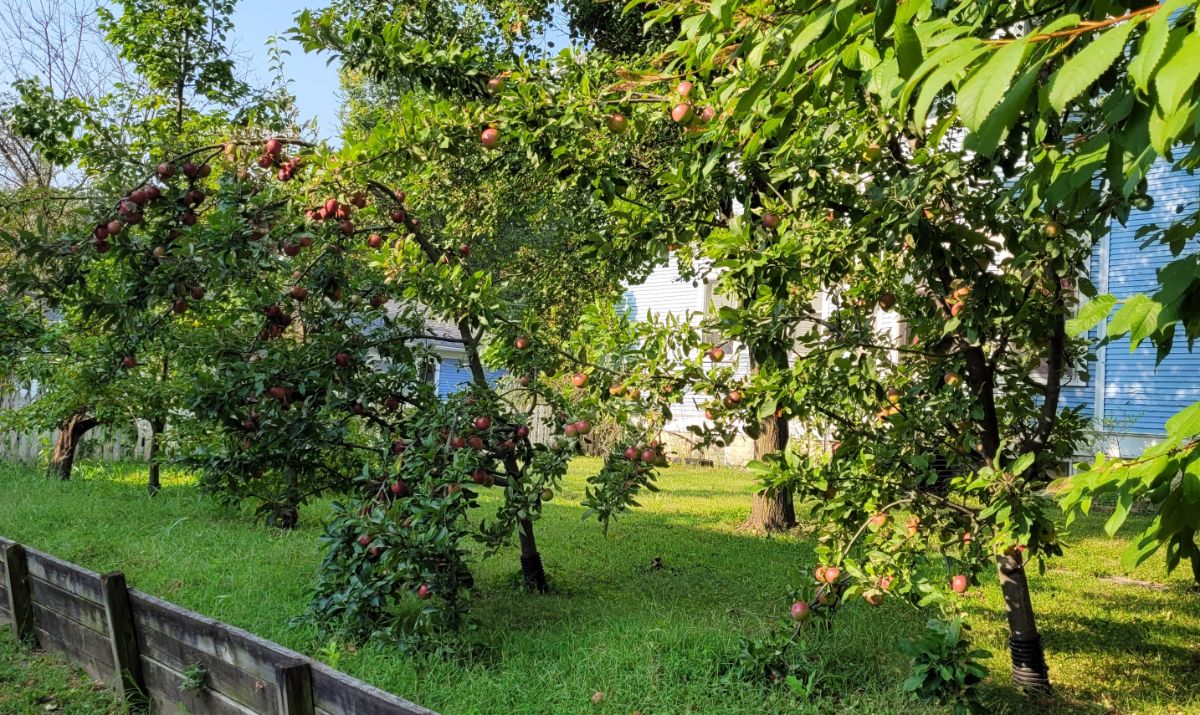
I also want to get a bunch of wild apples – Malus sieversii – from Central Asia. It’s the species that domestic apples are descended from.
M. sieversii used to make up these enormous fruit forests through the Tian Shan and elsewhere. But due to developers and other indignities that resulted in massive habitat loss, the great forests of apples are now mere remnants.
The wild thing is that when you plant the seeds of these trees, you don’t know what you’re going to get. Will you get a tree with tiny crabapples? Will you get a tree that bears big old honking apples? You don’t know! It’s like the apple lottery!
The genetic diversity of those apples is just incredible – and hopefully, apple breeders are adding these new genetics (or old genetics, technically) to new apple varieties to widen the gene pool and create new types of apples. I’m always in favor of that.
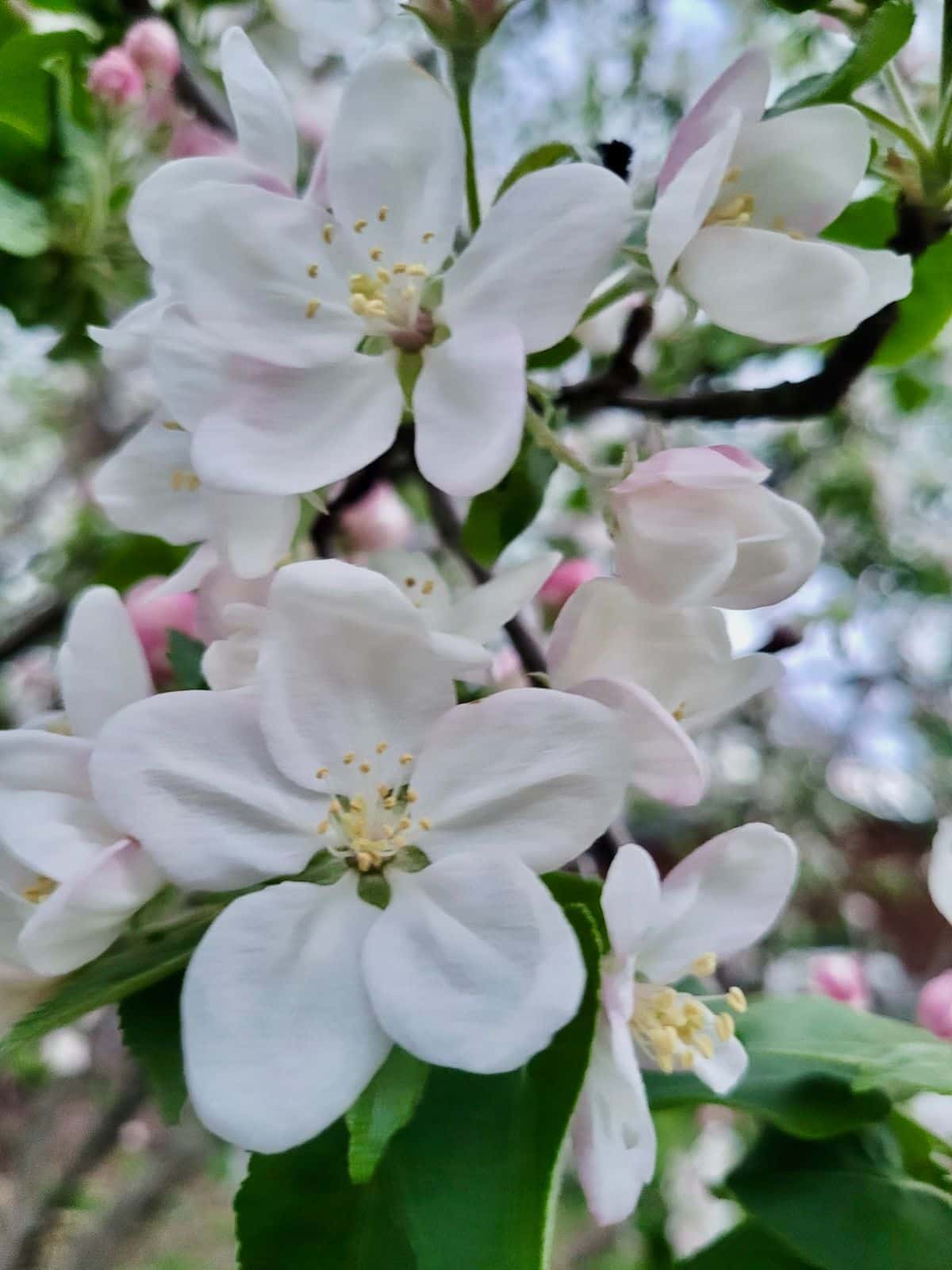
Yes, apple trees get diseases. I don’t spray my apples. I just let the diseases and bugs have their way mostly – except for the Japanese beetles because I gather them to feed the chickens. But when fall comes around, that’s apple season, and I am here for it.
Sometimes gardening is not about which tree is most disease resistant or which tree is most beautiful or most blossomy. Sometimes it’s just being able to grow trees that just make you deeply happy.


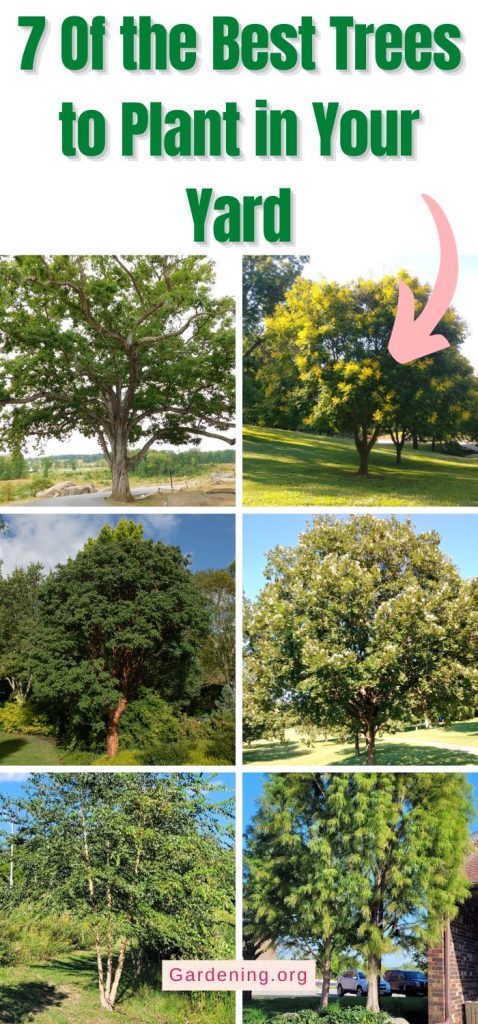

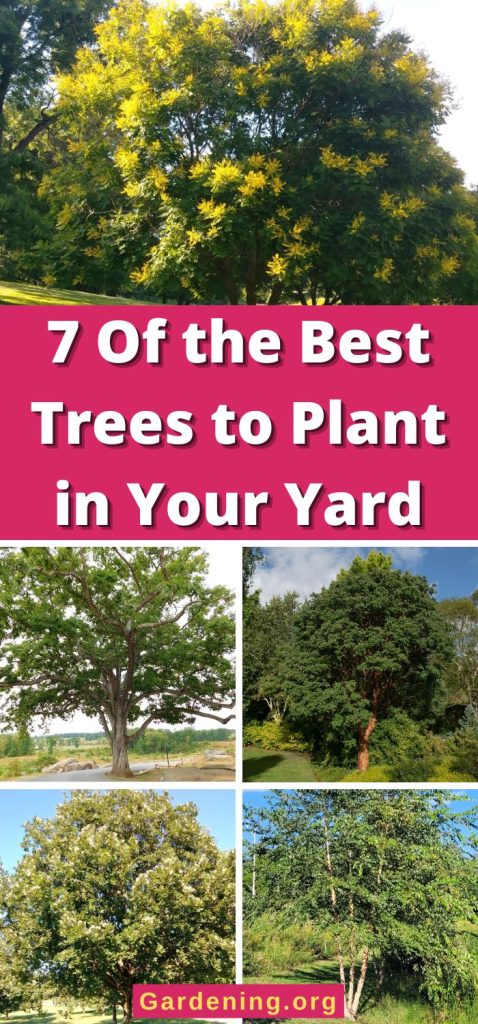
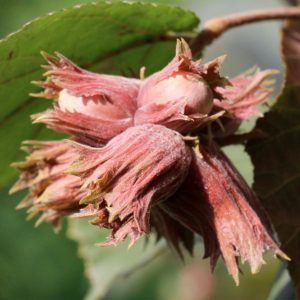
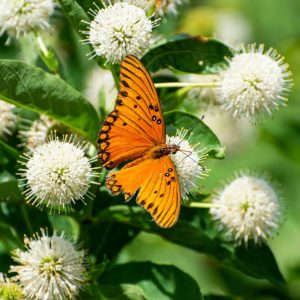
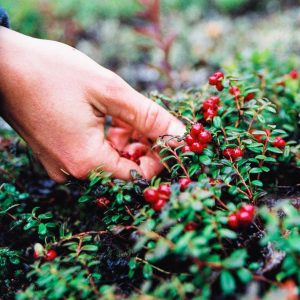
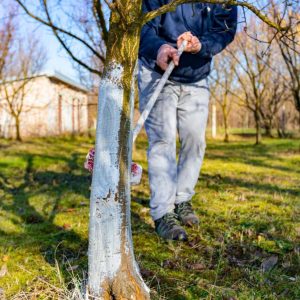
Leave a Reply